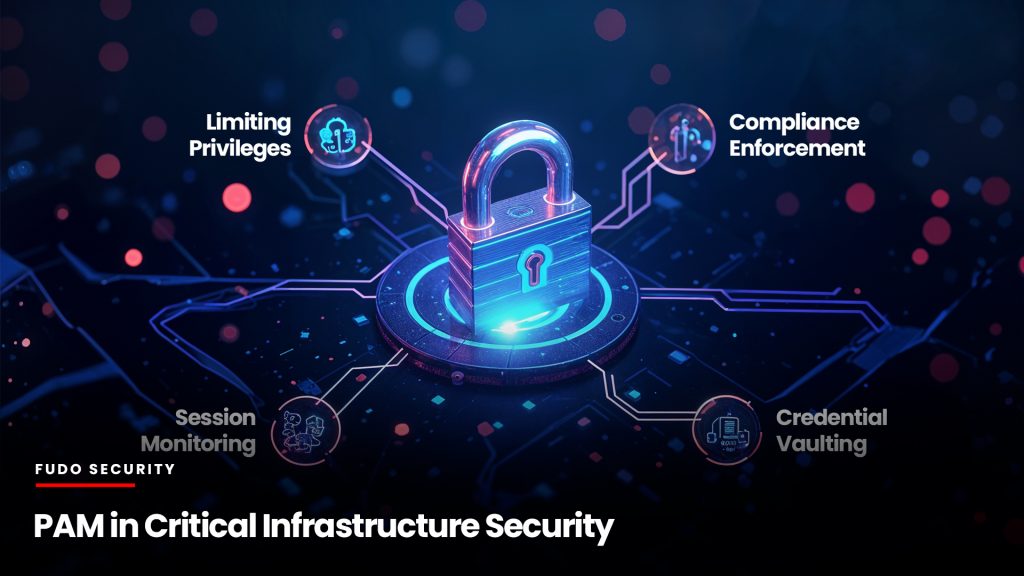
Critical infrastructure forms the backbone of modern civilization, supporting industries, public safety, and the economy. These systems and assets, encompassing energy grids, water supplies, transportation networks, healthcare facilities, and more, are indispensable. As threats to critical infrastructure grow more sophisticated, bolstering their resilience has become a pressing priority. This article provides an in-depth examination of critical infrastructure protection (CIP), identifying risks, proposing robust strategies, and offering actionable recommendations to secure these vital assets.
Understanding Critical Infrastructure Protection

What is Critical Infrastructure Protection (CIP)? Critical Infrastructure Protection involves safeguarding essential systems, networks, and physical or virtual assets integral to societal functioning. The U.S. Department of Homeland Security identifies 16 critical sectors, including:
Energy
Water and Wastewater Systems
Transportation Systems
Healthcare and Public Health
Food and Agriculture
Financial Services
Communications
Information Technology
Chemical
Commercial Facilities
Critical Manufacturing
Dams
Defense Industrial Base
Emergency Services
Government Facilities
Nuclear Reactors, Materials, and Waste
Each sector represents a unique risk profile, and disruptions in any can have cascading effects across society. For example, a cyberattack on the energy grid could impede hospital operations, showcasing the interconnected nature of critical infrastructure.
Threats and Risks to Critical Infrastructure
Cyber Threats
Cyberattacks exploit vulnerabilities in Operational Technology (OT) and Industrial Control Systems (ICS), such as Supervisory Control and Data Acquisition (SCADA) systems. Attack scenarios include:
Ransomware Infiltration. Encrypting critical data and demanding payment to restore access.
Supply Chain Exploits. Compromising third-party software updates to deploy malicious code.
Zero-Day Exploits. Targeting unpatched vulnerabilities in ICS environments.
Common vulnerabilities include outdated software, flat network architecture, and insufficient monitoring of external connections. These gaps enable attackers to infiltrate systems, exfiltrate data, or deploy disruptive payloads.
Insider Threats
Insider threats arise from employees, contractors, or third-party vendors with access to sensitive systems. Scenarios include:
Malicious Intent. Disgruntled employees deliberately sabotage or exfiltrate data.
Unintentional Errors. Misconfigured access controls exposing critical systems.
Supply Chain Threats. Vendors unintentionally introduce vulnerabilities via compromised tools or processes.
For instance, excessive privilege allocation without monitoring increases the risk of misuse, either maliciously or inadvertently.
Physical Threats
Physical threats, such as sabotage, theft, or natural disasters, pose significant risks. Scenarios include:
Targeted Attacks. Substation intrusions cause power outages.
Natural Disasters. Flooding or earthquakes damage critical assets.
Theft of Sensitive Equipment. Loss of physical components vital to operations.
Robust physical security measures and disaster recovery plans mitigate these risks effectively.
Protecting Critical Infrastructure
NIST Framework and Standards
The National Institute of Standards and Technology (NIST) provides a robust foundation for securing critical infrastructure, offering several frameworks and guidelines tailored to address the unique challenges of operational and information technology environments.
Cybersecurity Framework (CSF)
The NIST CSF is built around five core functions: Identify, Protect, Detect, Respond, and Recover. Each function serves as a pillar of comprehensive risk management:
Identify. Organizations must catalog all critical assets, dependencies, and interconnections to understand potential risks. For example, utilities must maintain a detailed inventory of substations, control systems, and communication channels.
Protect. Protective measures include deploying firewalls, enforcing encryption standards, and conducting regular cybersecurity awareness training.
Detect. Advanced monitoring tools, such as Security Information and Event Management (SIEM) systems, are critical for identifying anomalies and potential breaches in real-time.
Respond. Incident response plans ensure rapid containment and mitigation of detected threats. This involves predefined protocols for isolating affected systems and communicating with stakeholders.
Recover. Developing and testing disaster recovery plans ensures the timely restoration of services, minimizing downtime and economic impact.
SP 800-82: Guide to ICS Security
Industrial Control Systems (ICS) present unique challenges due to their integration of legacy systems, real-time operations, and lack of standard cybersecurity measures. NIST SP 800-82 provides sector-specific guidelines, including:
Segmentation Strategies. Dividing networks into functional segments with strict controls prevents attackers from gaining access to critical systems through less secure interfaces.
ICS-Specific Threat Models. Tailored threat models account for physical safety risks, operational disruptions, and cascading failures in interconnected systems.
Secure Protocols. Replacing default protocols with encrypted communication standards such as OPC UA ensures data integrity and confidentiality.
SP 800-53: Security and Privacy Controls
SP 800-53 delivers a catalog of controls addressing the security and resilience of federal systems, which can be adapted for critical infrastructure. Key controls include:
Access Control Mechanisms. Implementation of Role-Based Access Control (RBAC) limits system access based on job roles, reducing insider and outsider attack surfaces.
Continuous Monitoring. Real-time monitoring systems provide critical insights into security posture, enabling proactive risk management.
Incident Documentation. Maintaining detailed records of incidents and response efforts supports forensic investigations and compliance audits.
Collaborative Efforts by CISA
The Cybersecurity and Infrastructure Security Agency (CISA) leads efforts to enhance national resilience through collaboration and innovation.
National Risk Management Center (NRMC)
The NRMC analyzes systemic risks across interconnected critical infrastructure sectors. Its initiatives include:
Sector-Specific Risk Models. Providing tailored recommendations for industries like energy, healthcare, and transportation, which often face distinct threat landscapes.
Public-Private Partnerships. Facilitating collaboration between government entities and private organizations to share threat intelligence and best practices.
Shields Up Campaign
Launched in response to escalating global cyber threats, Shields Up provides:
Real-Time Threat Alerts. Alerts and recommendations for specific vulnerabilities targeting sectors such as utilities and finance.
Resource Toolkits. Free resources, including security checklists and vulnerability scanning tools, help organizations identify and remediate weaknesses.
Strategies for Enhancing Resilience

Strengthening Physical Security
A comprehensive approach to physical security involves integrating advanced technologies with operational protocols. Strategies include:
- Perimeter Defenses. Deploy cutting-edge surveillance systems such as motion-detecting sensors, thermal imaging cameras, and biometric access points. These technologies deter unauthorized entries while enabling rapid identification of breaches.
- Resilient Infrastructure Design. Facilities should be constructed with redundancy and robustness in mind. This includes flood-proof buildings, reinforced power lines, and seismic-resistant structures designed to withstand region-specific threats.
- Regular Security Drills. Realistic simulation exercises can help organizations refine response plans. Drills might simulate intrusions, natural disasters, or cascading system failures to stress-test resilience and readiness.
Deploying Advanced Cybersecurity Solutions
Modern cybersecurity requires a defense-in-depth approach, incorporating multiple layers of protection:
- Zero Trust Architecture (ZTA). ZTA eliminates implicit trust by verifying every user and device across all access points, even within the internal network.
- Network Segmentation. Isolating OT systems from IT environments minimizes the lateral movement of attackers. For example, deploying firewalls to create secure DMZs prevents unauthorized cross-sector access.
- Deception Technology. Honeypots and decoy systems mislead attackers, buying time to identify and neutralize threats.
- Intrusion Detection Systems (IDS). AI-powered IDS solutions analyze network traffic for unusual activity patterns, proactively blocking cyber intrusions.
- Automated Patching Systems. Unpatched vulnerabilities are frequently exploited. Automated systems streamline patch deployments, minimizing exposure windows.
Effective Access Control
Access control mechanisms are critical in protecting sensitive systems:
- Role-Based Access Control (RBAC). Assigning granular permissions ensures users only access data necessary for their roles, reducing the attack surface.
- Multi-Factor Authentication (MFA). Strengthening authentication with multiple verification layers protects against credential theft.
- Privileged Access Monitoring. Implementing real-time tracking tools to monitor and analyze privileged user behavior, flagging anomalies such as unauthorized attempts to access critical systems.
Implementation and Recommendations
Threat Information Sharing
Real-time intelligence sharing enhances threat awareness and preparedness. Platforms like Information Sharing and Analysis Centers (ISACs) empower sectors to:
- Exchange timely threat intelligence.
- Collaborate on developing sector-specific countermeasures.
- Respond cohesively to multi-sector threats.
Incident Response Planning
An effective incident response plan includes:
- Defined Roles and Protocols. Clearly outlined responsibilities for all stakeholders, ensuring swift and coordinated action during incidents.
- Regular Simulation Drills. Testing response plans under simulated attack scenarios to refine processes and ensure readiness.
- Post-Incident Reviews. Conducting detailed analyses to learn from incidents and improve resilience.
Building Resilience
Building operational resilience ensures continuity under adverse conditions. Core measures include:
- System Redundancies. Implementing backups for critical operations, such as alternate power supplies and redundant data centers.
- Predictive Analytics. Leveraging IoT and machine learning to preemptively identify and address potential system failures.
- Smart Infrastructure. Integrating adaptable systems like smart grids to optimize resource allocation and recovery processes.
Role of PAM in Critical Infrastructure Security

Privileged Access Management (PAM) solutions are pivotal in protecting critical infrastructure by:
- Limiting Privileges. Enforcing least privilege principles to reduce attack surfaces.
- Session Monitoring. Recording and analyzing privileged sessions to detect malicious activity.
- Credential Vaulting. Safeguarding sensitive credentials against unauthorized access.
- Compliance Enforcement. Helping in adherence to regulatory requirements like NERC-CIP or ISO 27001.
These features not only enhance cybersecurity but also streamline operational efficiency and accountability.
Conclusion
Critical infrastructure security demands a multifaceted approach combining physical safeguards, advanced cybersecurity, regulatory adherence, and innovative technologies. By integrating robust strategies and leveraging tools like PAM solutions, stakeholders can mitigate risks and ensure the continuity of essential services. Protecting critical infrastructure is an ongoing commitment vital to societal stability and economic prosperity.

